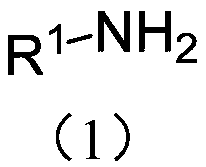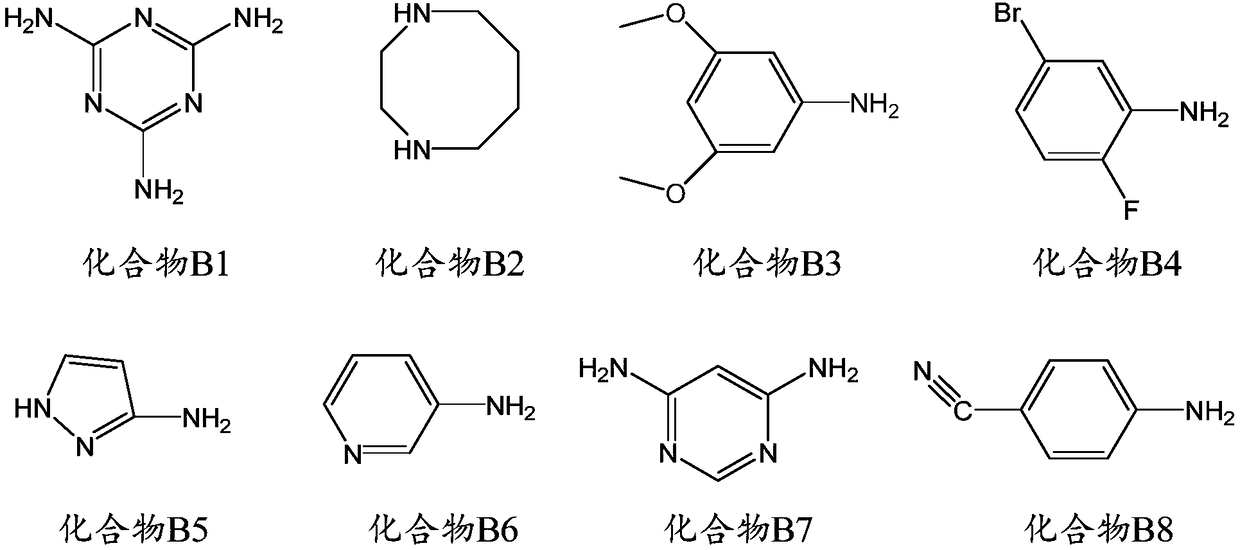A lithium ion battery electrolyte and a lithium ion battery
A lithium-ion battery and electrolyte technology, which is applied to secondary batteries, circuits, electrical components, etc., can solve the problems of reducing the high-temperature cycle performance and rate performance of lithium-ion batteries, poor cycle stability, and rupture of electrode surface films, etc., to improve High-temperature cycle performance and rate performance, strong oxidation resistance, and the effect of reducing impedance
- Summary
- Abstract
- Description
- Claims
- Application Information
AI Technical Summary
Problems solved by technology
Method used
Image
Examples
Embodiment 1
[0054] (1) Positive electrode preparation: the high-voltage positive electrode active material NCA (nickel-cobalt-aluminum ternary material LiNi 0.8 co 0.1 mn 0.1 o 2 , purchased from BTR), CNTs (carbon nanotubes) and PVDF (polyvinylidene fluoride) according to the mass ratio of 97.8:1.0:1.2 mixed evenly, and then dispersed in N-methyl-2-pyrrolidone to obtain positive electrode slurry; The positive electrode slurry is evenly coated on both sides of the aluminum foil, and the positive electrode sheet is obtained after rolling and cutting, and finally baked and vacuum dried before use.
[0055] (2) Negative electrode preparation: Silicon carbon BTR-S450 negative electrode material (purchased from BTR), acetylene black, CMC (carboxymethyl cellulose), SBR (styrene-butadiene rubber) and binder according to the mass ratio of 95.8:0.5:1.4 : 1.8: 0.5 mixed evenly, and then dispersed in deionized water to obtain negative electrode slurry; the negative electrode slurry was evenly coa...
Embodiment 2
[0059] The preparation method of the lithium-ion battery is the same as that of Example 1, except that the non-aqueous organic solvent in step (3) is ethylene carbonate, dimethyl carbonate and ethyl methyl carbonate, which are uniformly mixed according to the mass ratio of 2:4:1 After the mixed solution, the addition amount is 75% of the total mass of the electrolyte; the lithium salt is a mixture of lithium hexafluorophosphate and lithium difluorooxalate borate, and the addition amount is 12.45% of the total mass of the electrolyte; the composition and addition amount of the additive account for The percentage (wt%) of the total mass is shown in Table 1 below.
[0060] Components and additions of addition amount in each embodiment of table 1 and comparative example
[0061]
[0062]
Embodiment 3
[0064] The preparation method of the lithium-ion battery is the same as in Example 1, except that the non-aqueous organic solvent in step (3) is ethylene carbonate, propylene carbonate and butylene carbonate according to the mass ratio of 2:4:1 uniformly mixed The mixed solution, the addition amount is 76.07% of the total mass of the electrolyte; the lithium salt is a mixture of lithium hexafluorophosphate and lithium difluorooxalate borate, the addition amount is 8% of the total mass of the electrolyte; the composition and addition amount of the additive account for the total mass of the electrolyte The percentage of mass is shown in Table 1.
PUM
 Login to View More
Login to View More Abstract
Description
Claims
Application Information
 Login to View More
Login to View More - R&D
- Intellectual Property
- Life Sciences
- Materials
- Tech Scout
- Unparalleled Data Quality
- Higher Quality Content
- 60% Fewer Hallucinations
Browse by: Latest US Patents, China's latest patents, Technical Efficacy Thesaurus, Application Domain, Technology Topic, Popular Technical Reports.
© 2025 PatSnap. All rights reserved.Legal|Privacy policy|Modern Slavery Act Transparency Statement|Sitemap|About US| Contact US: help@patsnap.com



